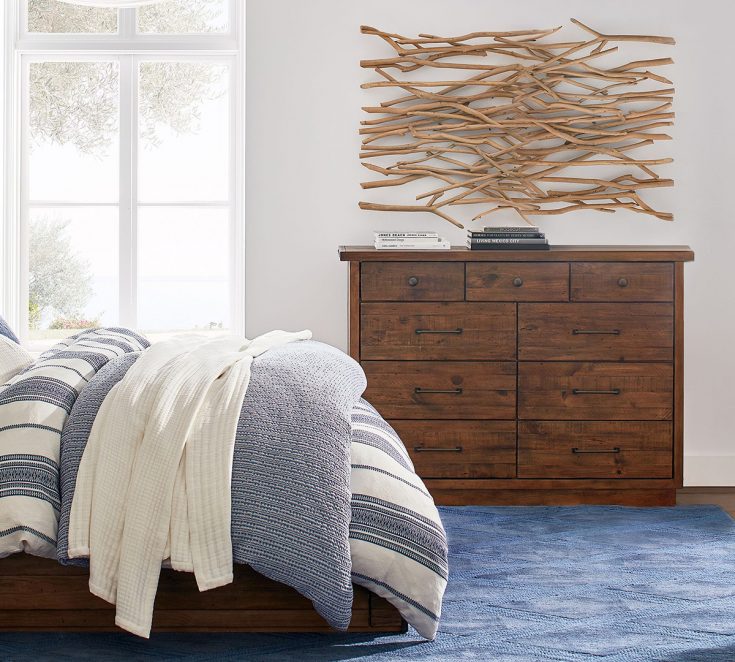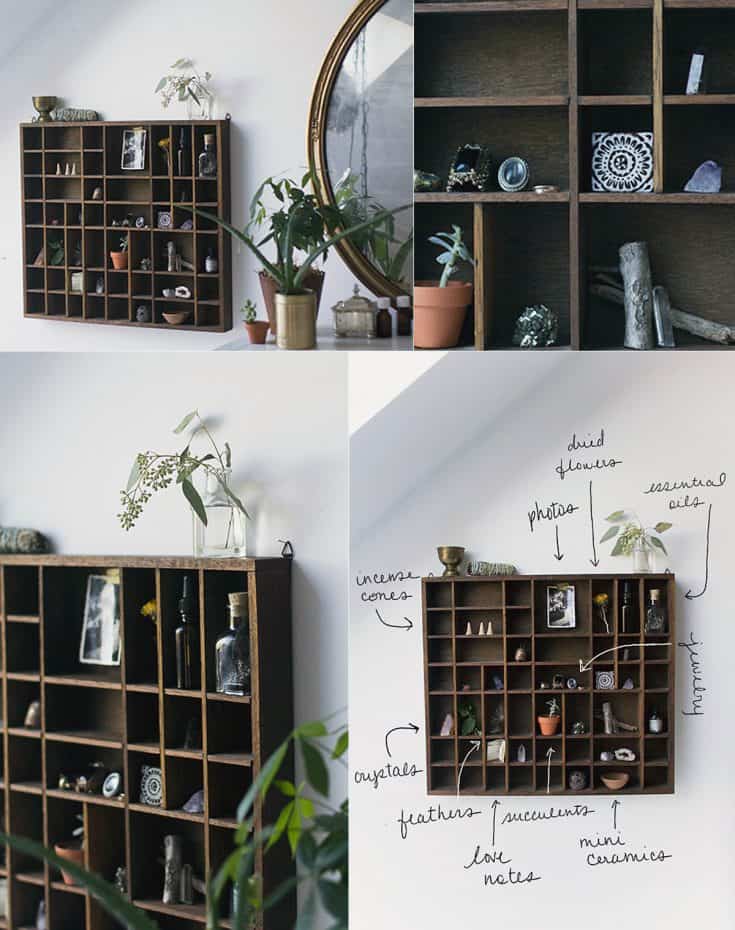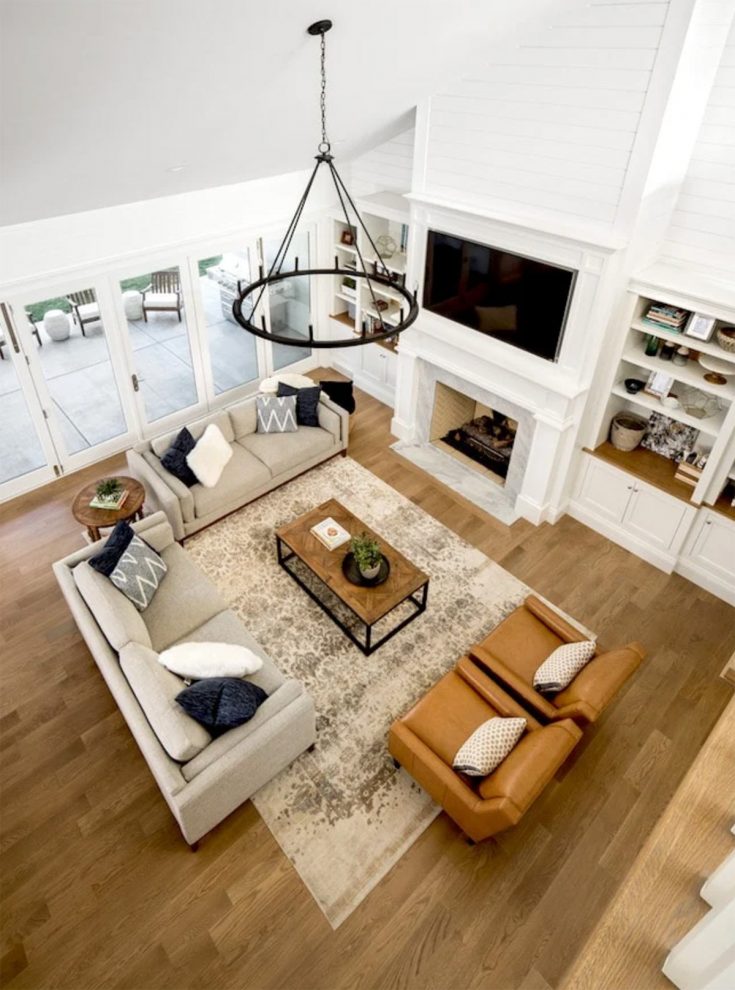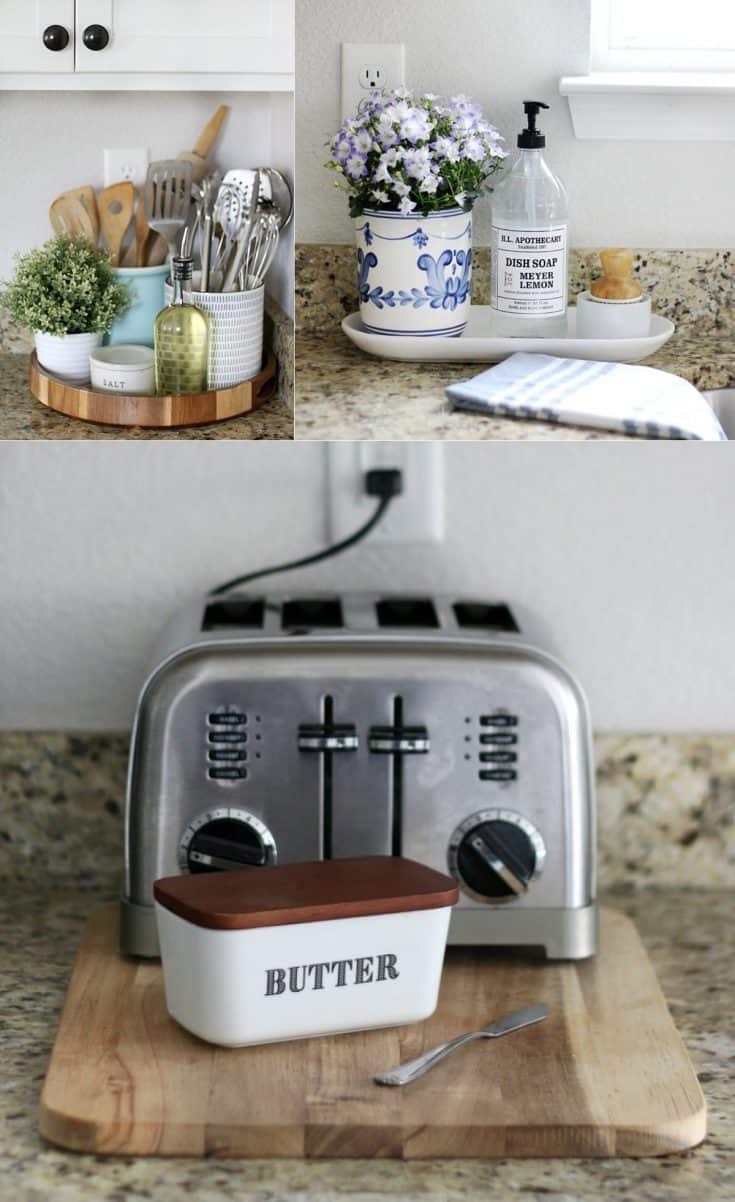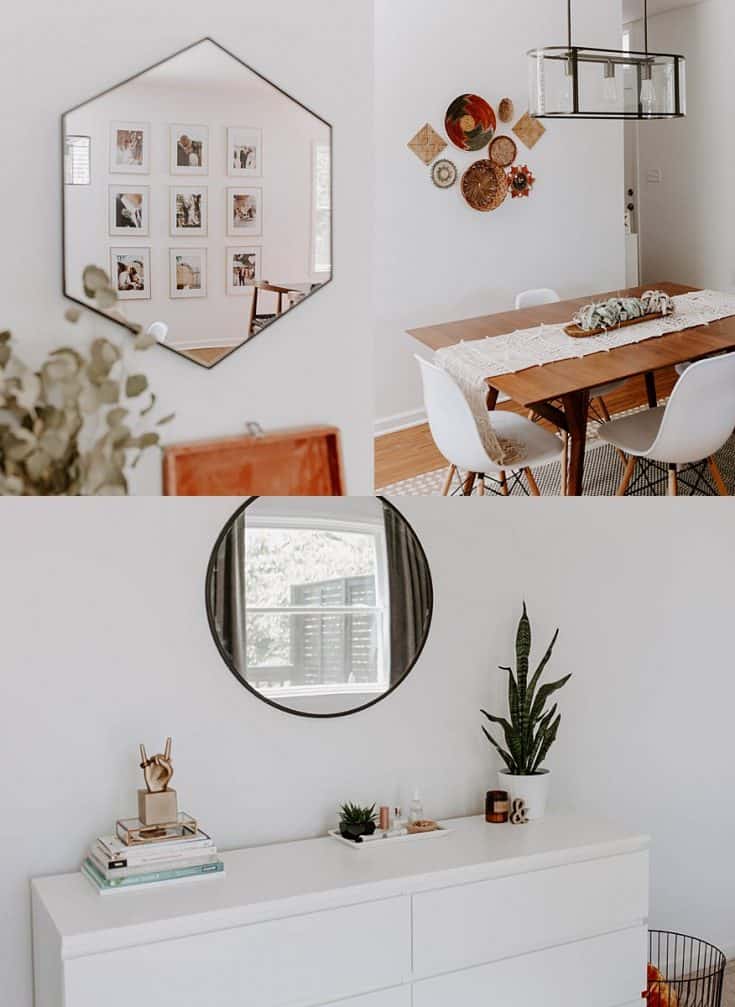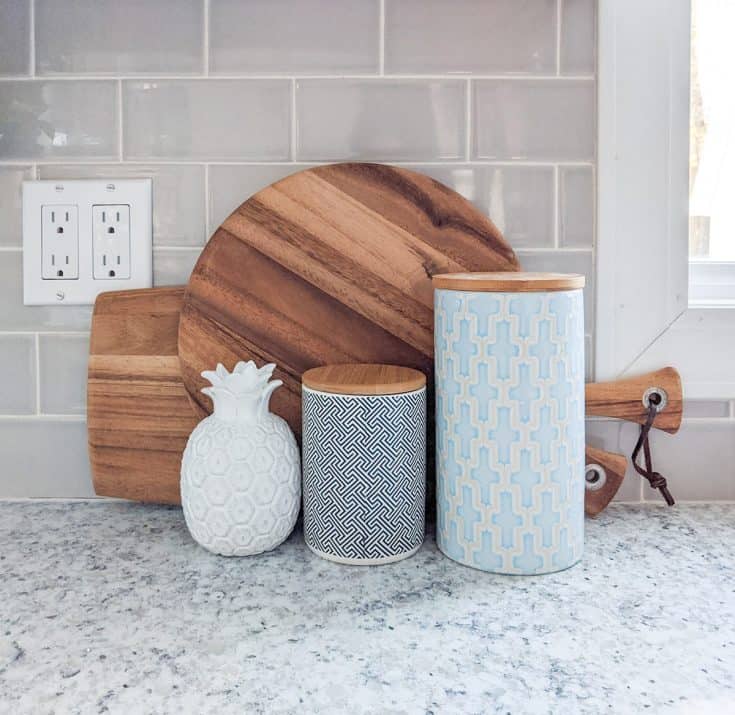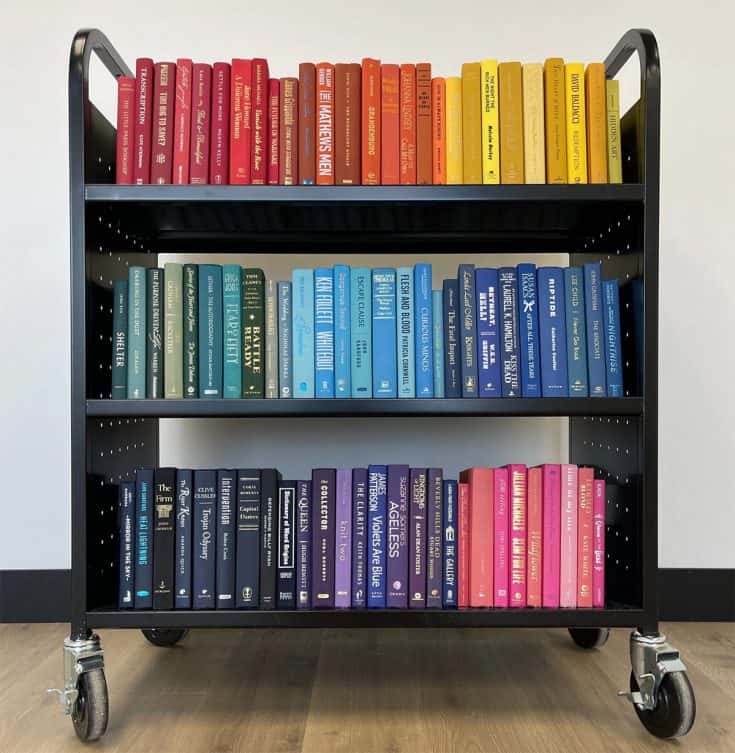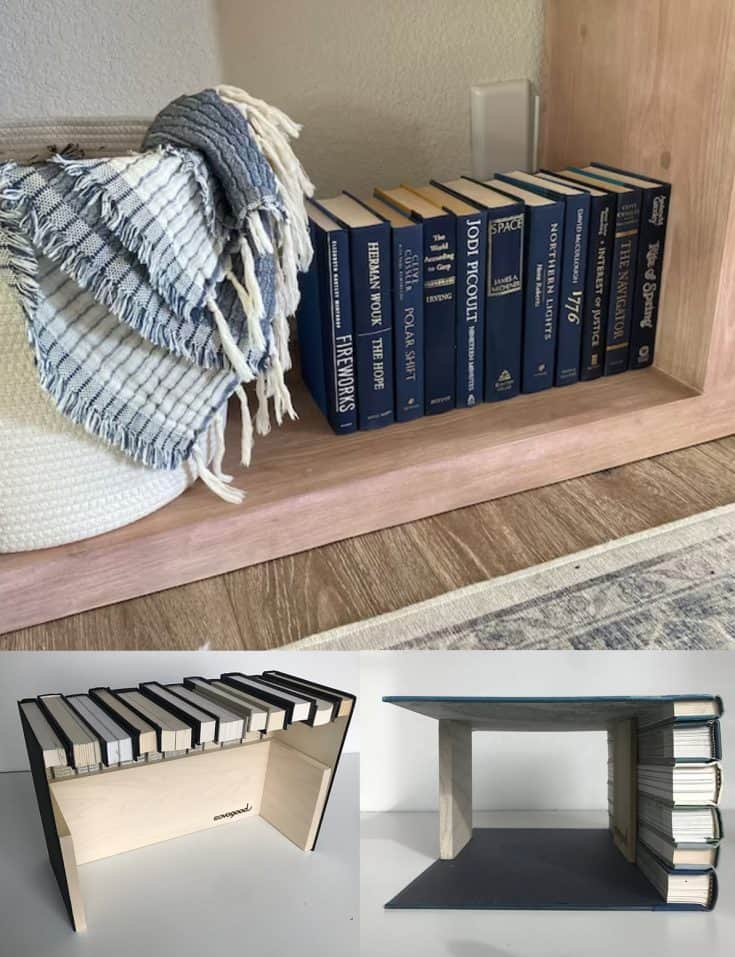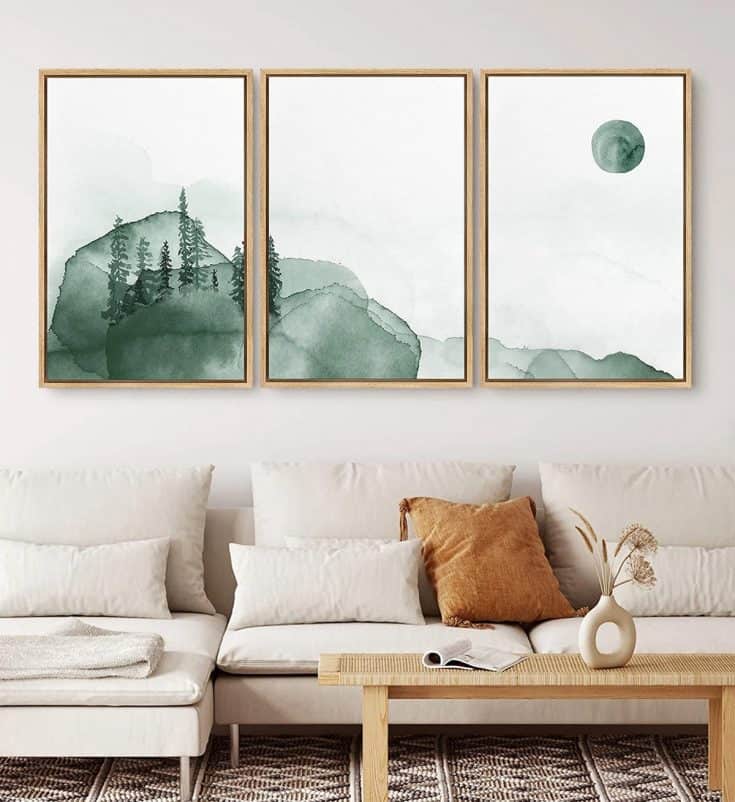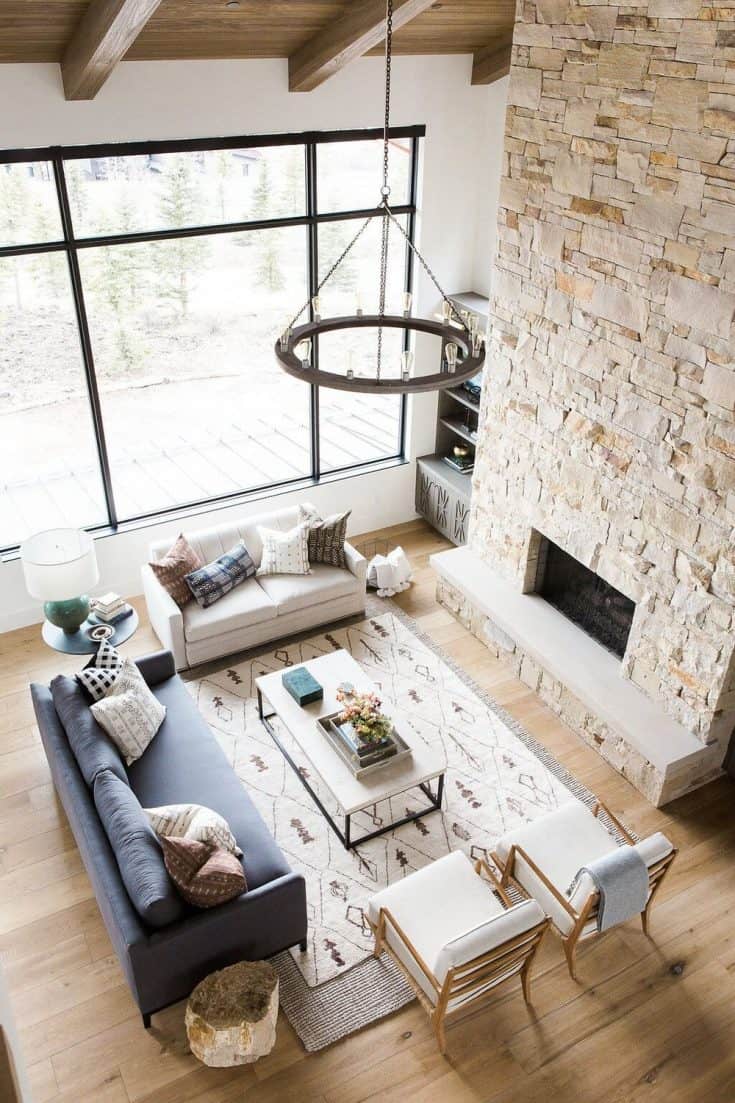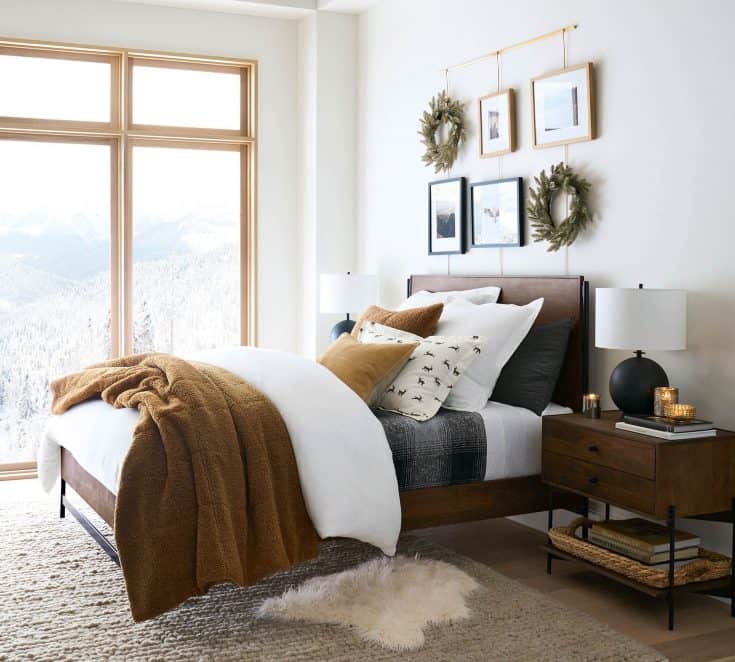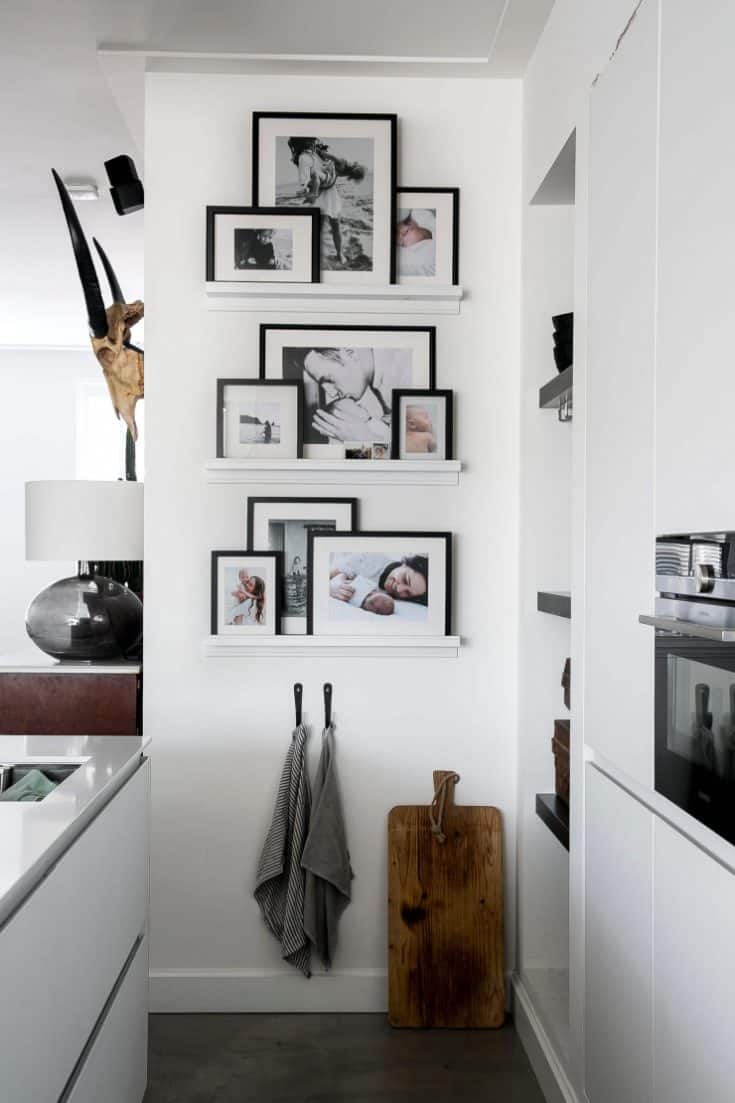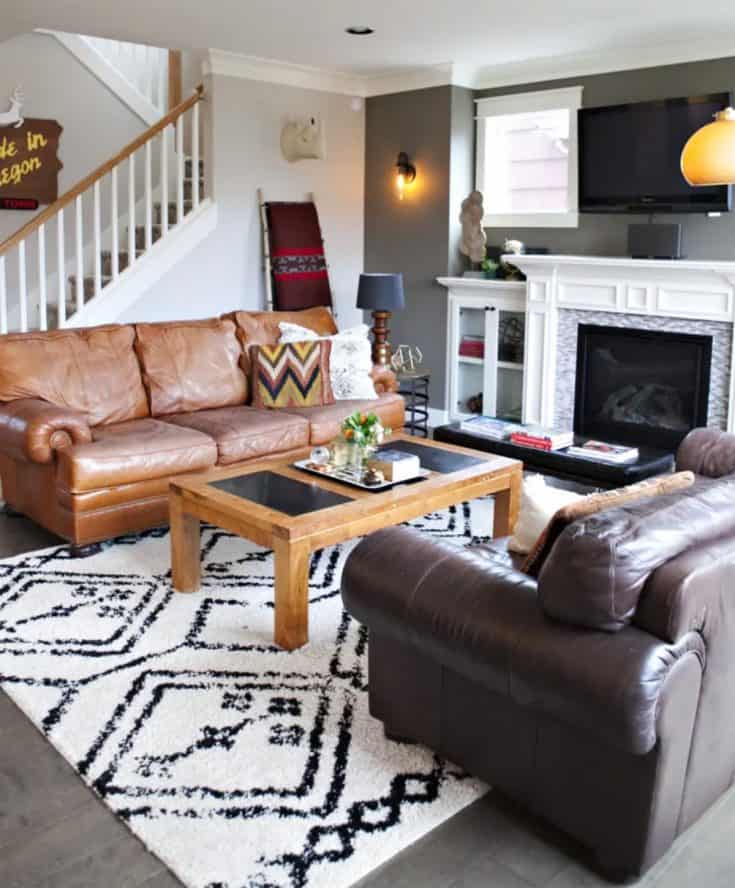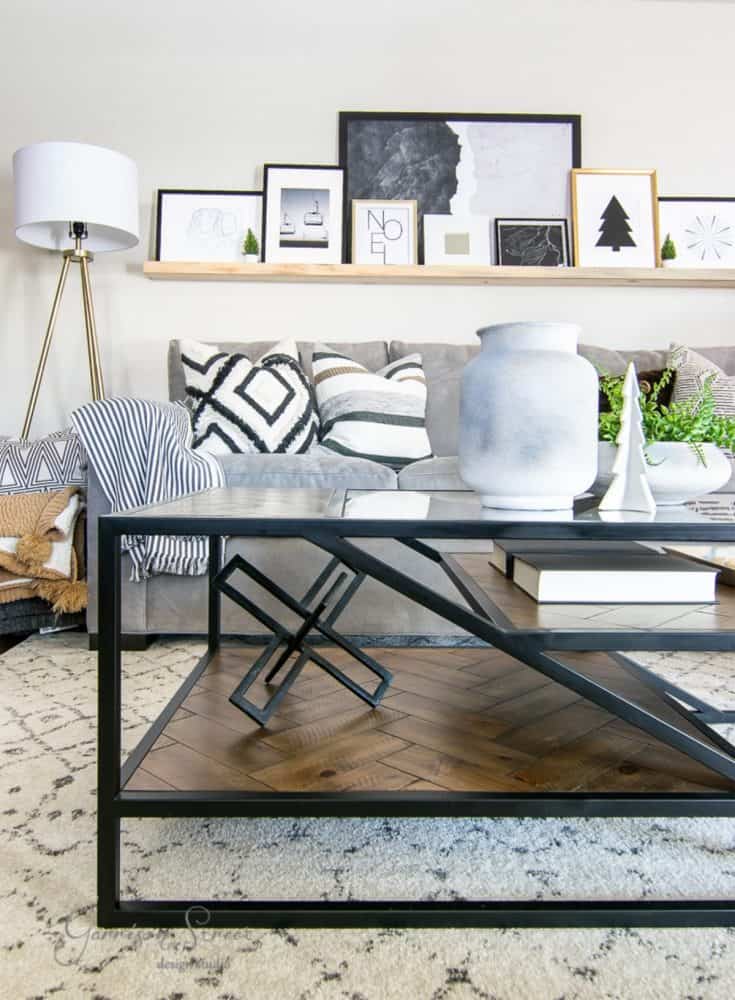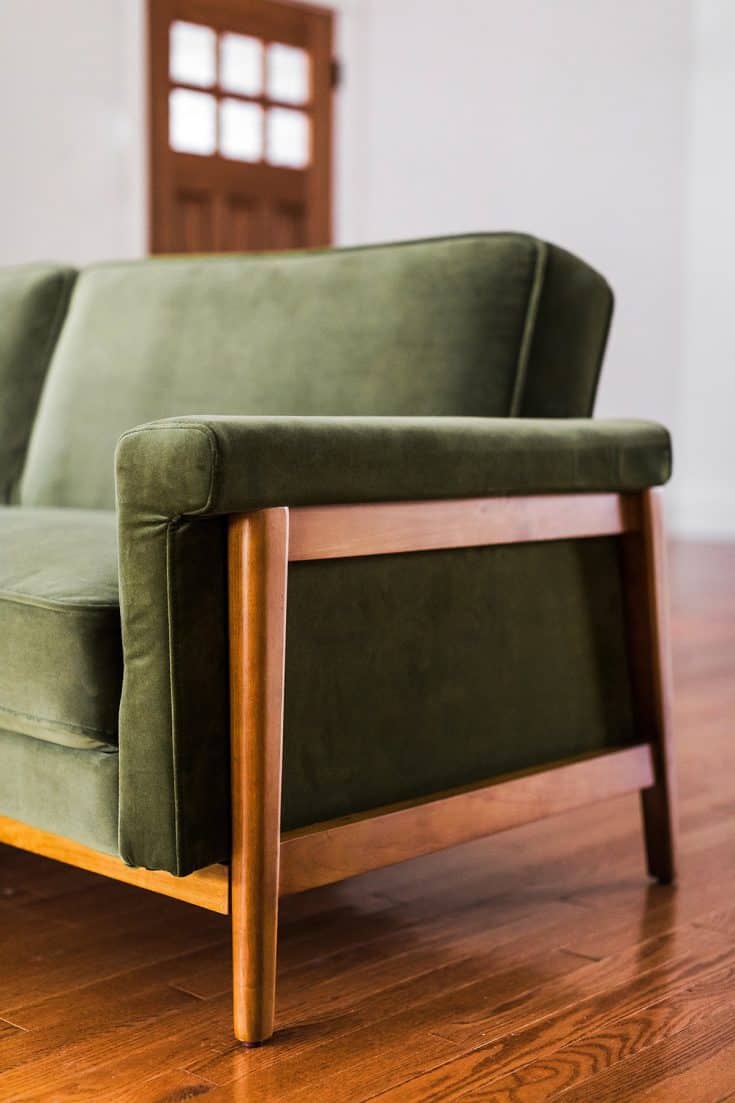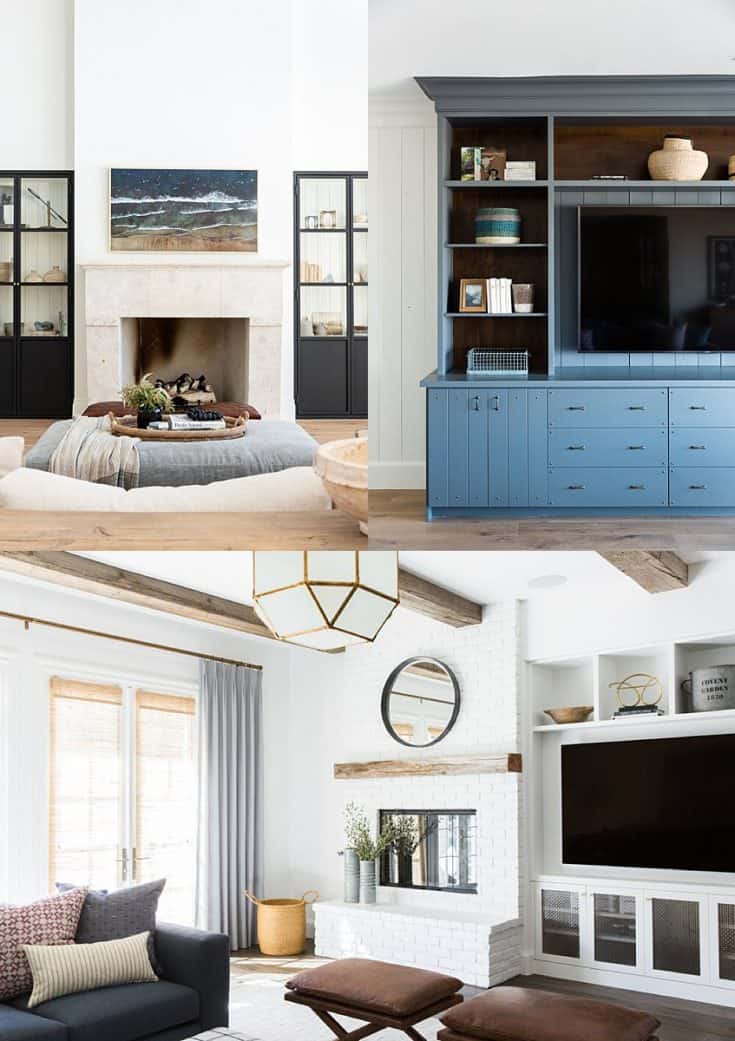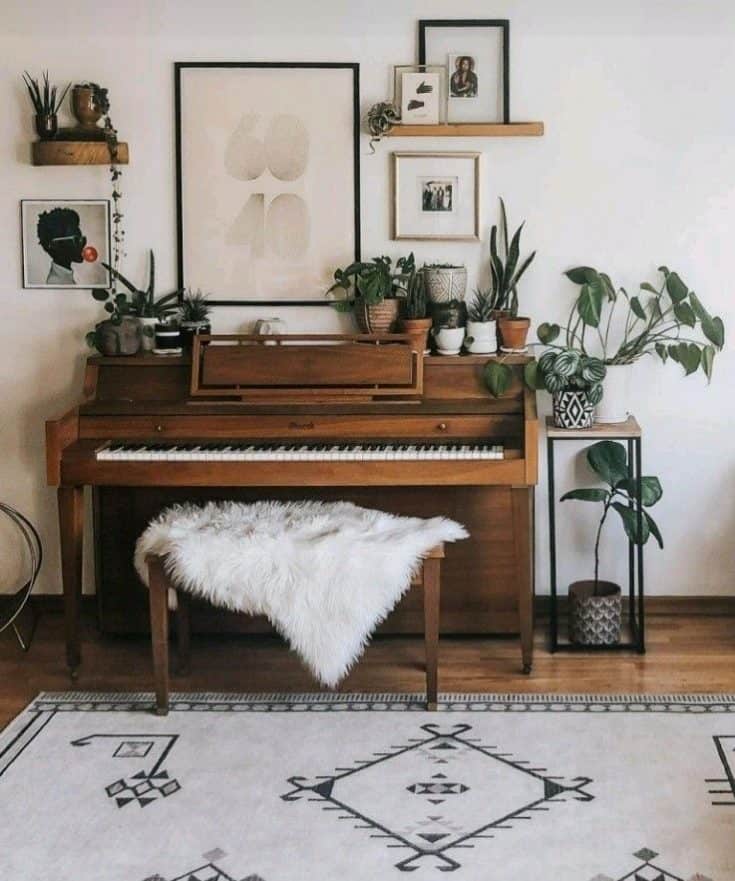Using Gestalt principles and the psychology of subconscious grouping can help you reduce visual clutter in your home without donating a single thing.
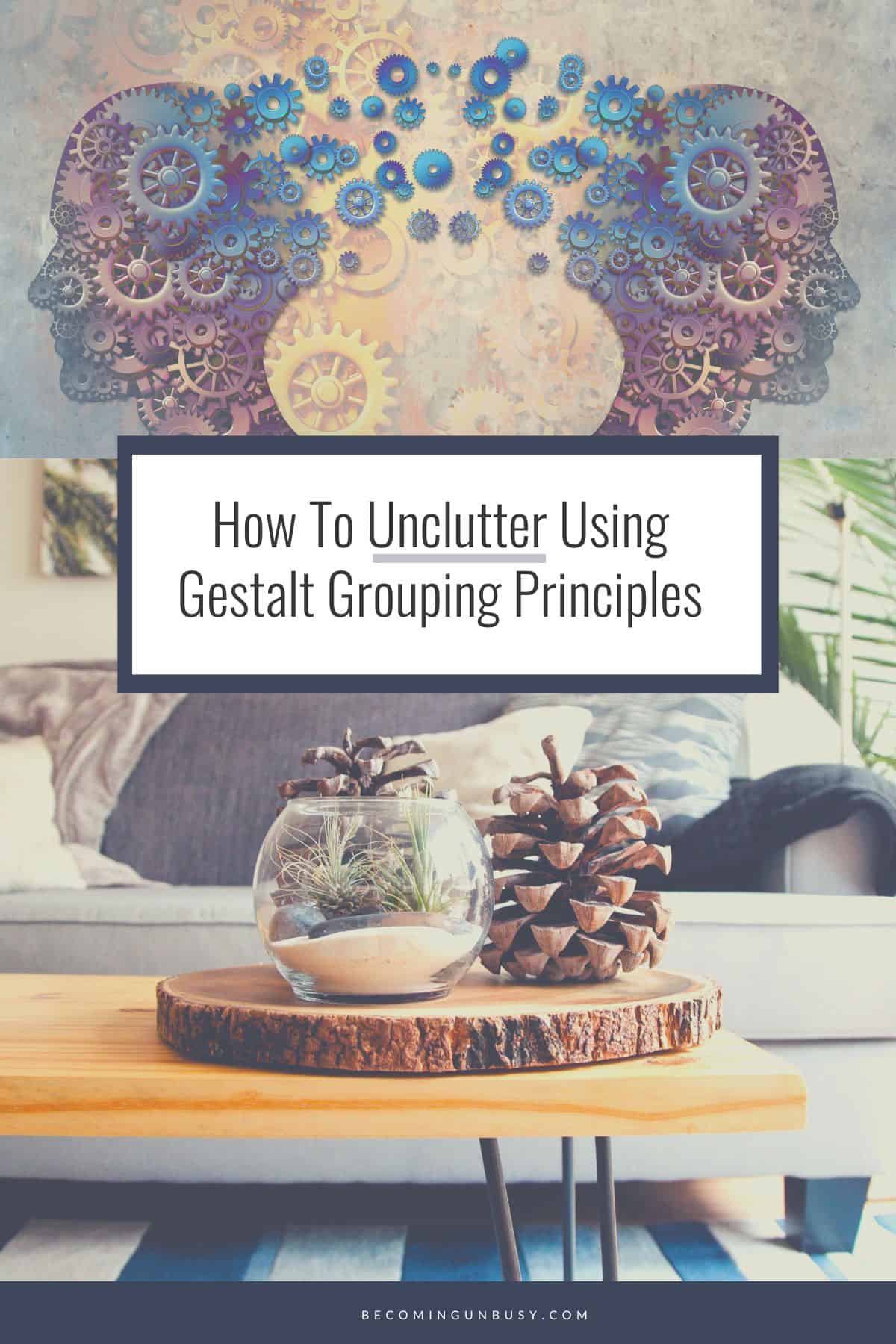
When we enter a home or even a room, we either feel peace or as if something is off — even if we cannot articulate why. Do you feel that way in your own home?
What if I told you that there is a possibility that your home will feel cluttered, no matter how much you minimize?
If it feels like you're constantly dropping off donation boxes and you cannot seem to find the finish line, it might be time to try a different tactic.
Unclutter With Gestalt Principles
Hello, I'm your brain.
Stop ignoring me.
While reducing clutter in your home is a great first step, having a peaceful home requires us to stop ignoring the psychology of groupings and design.
Using principles based on studies of the brain and neurological research you can reduce clutter without getting rid of a single thing.
The Gestalt principles below focus on how our minds organize and interpret visual data (1), including the clutter within our homes.
MEMBERS-ONLY: In the UnBusy Collective, we're doing a deep dive and learning about how to unclutter "for the mind" using the Gestalt Laws of Perceptual Organization. Get a sneak peek of some of the topics we're discussing below.
*Are you ready to opt-out of overwhelm? Join us and reset your home, habits, and life to make space for simple living.
What is Gestalt Psychology?
The foundational principles of Gestalt psychology explain how our mind groups things. A core tenant of Gestalt theory is holism, or the concept that the whole is greater than the sum of its parts (3).
In other words, our brains are constantly looking for patterns and groupings. Our minds do not focus on small visual details when trying to make sense of what we see in our homes (and in the world).
Gestalt psychology suggests that our brains prefer to group objects together and subconsciously simplify.
You can quickly see how understanding the basic Gestalt principles can be a powerful opportunity to reduce visual clutter in your home!
History and Current Uses of Gestalt Principles
In the early 1900s, German psychologists Immanuel Kant, Ernst Mach, and Johann Wolfgang von Goethe (2) influenced the development laws to explain how our minds group smaller objects to form larger ones (perceptual organization). They called this set of rules the Gestalt principles.
The German term gestalt roughly means "configuration" or how elements (or things) are patterned, placed, or put together to form a whole. There is no exact equivalent for the term in English.
While the foundation of Gestalt psychology dates back to 1912, there are still many current uses today. You can see the influences of Gestalt principles in therapy, graphic design, and product development.
Using Gestalt Principles To Create a Peaceful Home
Gestalt principles are also widely used and celebrated in today's world within User Experience (or UX) Website Design.
Just like with UX design, we can use Gestalt principles to focus on making the "user experiences" in our homes memorable. UX design would suggest...
Your guests and family will forget "the stuff" in your house, but they will always remember how your home made them feel.
Remember how we spoke about how when we enter a room, we either feel peace or as if something is off — even if we cannot articulate why?
If you've already done a massive amount of donations and your home still feels cluttered, understanding the Gestalt principles might help you create a better experience or the feeling you crave in your home!
The 7 Principles of Gestalt Psychology
Some of the most important principles of Gestalt theory are:
- Law of Prägnanz (sometimes referred to as the Law of Simplicity)
- Law of Common Regions
- Law of Proximity
- Law of Similarity
- Law of Closure
- Law of Uniformed Connectedness
- Law of Parallelism
Learn about the seven principles below and how you can purposefully use each one within your home to reduce visual clutter, create connection, or live intentionally.
QUICK NOTE: The photos sourced below are to help visually explain the Gestalt principles. You don't need to have (or want!) a Pinterest-Perfect Home to put these "purposeful tips" into practice.
*Want to see photos of real everyday uncluttering? Join the UnBusy Collective to connect with women with perfectly-imperfect homes coming together to find ways to simplify. You are not alone on this journey.
Undestanding The Gestalt Principles
The law of prägnanz, or the Gestalt principle of simplicity, is the foundation of Gestalt psychology. This fundamental principle states that our minds naturally perceive things in their simplest form.
You can see the principle of prägnanz at play with this piece of abstract wall art. Even though you know this art piece is composed of multiple pieces of driftwood — your mind groups it into the simplest form first, a single sculpture.
According to the principle of prägnanz, the whole is always identified before the parts.
For example, if you walk into a room with an antique printer's box on the wall, your brain will see a single display first. Only after our brain sees this printer's box display as a whole does it decide if it would like to spend time identifying the individual parts.
In other words, visual clutter within the room is decreased by grouping these important trinkets within a display.
The Gestalt principle of common regions states that our minds tend to group objects located within the same bounded area.
For example, an area rug is a common tool for pulling together individual pieces of furniture into a set within an open space home.
Using the psychology of the Gestalt principle of common regions, you can reduce the impacts of visual clutter in your home by grouping things within a tray — no trip to the donation center required.
The Gestalt principle of proximity states that our mind views objects near each other as a group. In other words, our mind believes that things close together seem more related than things spaced farther apart.
You can see the principle of proximity at play in the:
- photo gallery wall
- basket wall display
- dining table centerpiece
- dresser decor
The Gestalt principle of proximity suggests our minds naturally group items and sees the collection whole. So when interior designer Emily Fritsch intentionally groups things, like these kitchen items, our mind sees less visual clutter.
This Gestalt principle of similarity states that our minds naturally group similar items based on elements like color, size, or orientation.
The Gestalt principle of similarity suggests our minds naturally see this cluster of blue books as a single grouping. I love this hidden storage Etsy find! This book cluster hides an electronic router, making the visual clutter completely disappear.
According to the Gestalt principle of closure, components that seem to "complete an entity" are perceived as a group — like these three pieces of artwork.
Our minds fills in missing information to create closure and make sense of a collection of objects.
This Gestalt principle of closure is about the subconscious human tendency to seek and find patterns.
Most often, when we feel unsettled in a room, the issue is furniture arrangement. If the Gestalt principle of closure is ignored when you arrange your furniture, your home will feel cluttered, no matter how much you minimize.
The principle of closure can be thought of as the glue holding furniture pieces together. The key to closure is providing enough visual information so the eye can fill in the blanks and the mind can rest. For example, the furniture arrangement above creates a square when your mind fills in the blanks.
When furniture is arranged following the rules of this principle, your brain stops seeing individual pieces cluttering a room and starts seeing a single cohesive shape or set. In other words, it reduces the visual clutter, and your home feels more peaceful.
This Gestalt principle of uniform connectedness states that visually connected elements are perceived as more related than those without connection.
In the bedroom above, the lines of the gold frame rail bring together the different colored art frames and wreaths as a cohesive gallery.
When we cover Purposeful Uncluttering in The UnBusy Reset course, we go through exercises to help you discover "your why" or the core reasons you want to clear clutter your home.
In the end, most people's core why is not "home organization." Many women speak about making space to connect with the people they love and choosing experiences over things. I love photo walls because they help remind people of those two goals.
This gorgeous family photo gallery uses a couple of Gestalt laws, including the principle of uniform connectedness. The line of the floating shelf visually connects and pulls the photographs together.
This Gestalt principle of parallelism states that your mind perceives items parallel to each other as a single group than elements that do not.
In this living room, interior designer Heather Keeling pulls together two visually unique couches and a coffee table using the principle of parallelism to create an inviting space for a family to connect.
From this perspective, you can see how the Gestalt principle of parallelism pulls together this coffee table, family sofa, and art ledge, making the room feel cohesive.
According to the principle of focal points, items displayed as a point of interest, emphasis, or difference will capture and hold your mind's attention longer.
The principles of similarity and focal points are interconnected. A focal point can only be seen within the presence of similarity. For example, in a bowl full of M&Ms, a single green candy will only stand out if surrounded by a sea of brown M&Ms.
The same would be true of a brilliant green velvet sofa in a living room of neutral colors. Our minds are always searching for patterns and things that stand out.
We can also see the Gestalt principle of focal points in furniture arrangements and interior design. In many gathering spaces, the focal point is often a television screen or fireplace.
In the UnBusy Reset, we talk about Purposeful Uncluttering as you reset your home. For example, you can purposefully use the Gestalt principle of focal points to create visual invitations.
When made into a room's focal point, a piano becomes an invitation to play. A stack of board games prominently showcased on a shelf becomes an invitation to gather for game night. When we design our homes with purpose, we live with more intention.
Strategies For Resetting Your Home & Life
If you found these Gestalt principles to be helpful, be sure to check out the UnBusy Collective. Each month, the group covers out-of-the-box strategies for simplifying.
If decluttering has become yet another thing on your to-do list, you've strayed too far from your original goal — a simple life.
It is easy to get wrapped up in a less is more mentality. If you're not Purposefully Uncluttering, minimalism can feel like another "keeping up with the Joneses" measuring stick.
Here's a harsh truth, my friend — when you busy yourself with mindlessly decluttering, you've artfully created a constant distraction that prevents you from seeing how truly ineffective it is…
Deep down, you've always known that real change will require more than cookie-cutter decluttering lists. If resetting your house was as easy as reading the right home hacks, you'd be done by now.
Get back on track with your intentional living goals and reset your home, habits, and life with the UnBusy Reset course and community membership!
Love this Gestalt Principles post? Sharing it would make our week. ♥
It would make our week if you took a second to share this Gestalt principles post on your favorite social media spot. That’s how we know we’re on the right track and should continue writing more content like this!
Gestalt Principles Sources
- Vezzani, S, Marino, BF, Giora, E. An early history of the Gestalt factors of organization.
- Bonacchi S, Czerniak S. Introduction: Gestalt as structure principles in science, art and language.
- Jäkel F, Singh M, Wichmann FA, Herzog MH. An overview of quantitative approaches in Gestalt perception.

